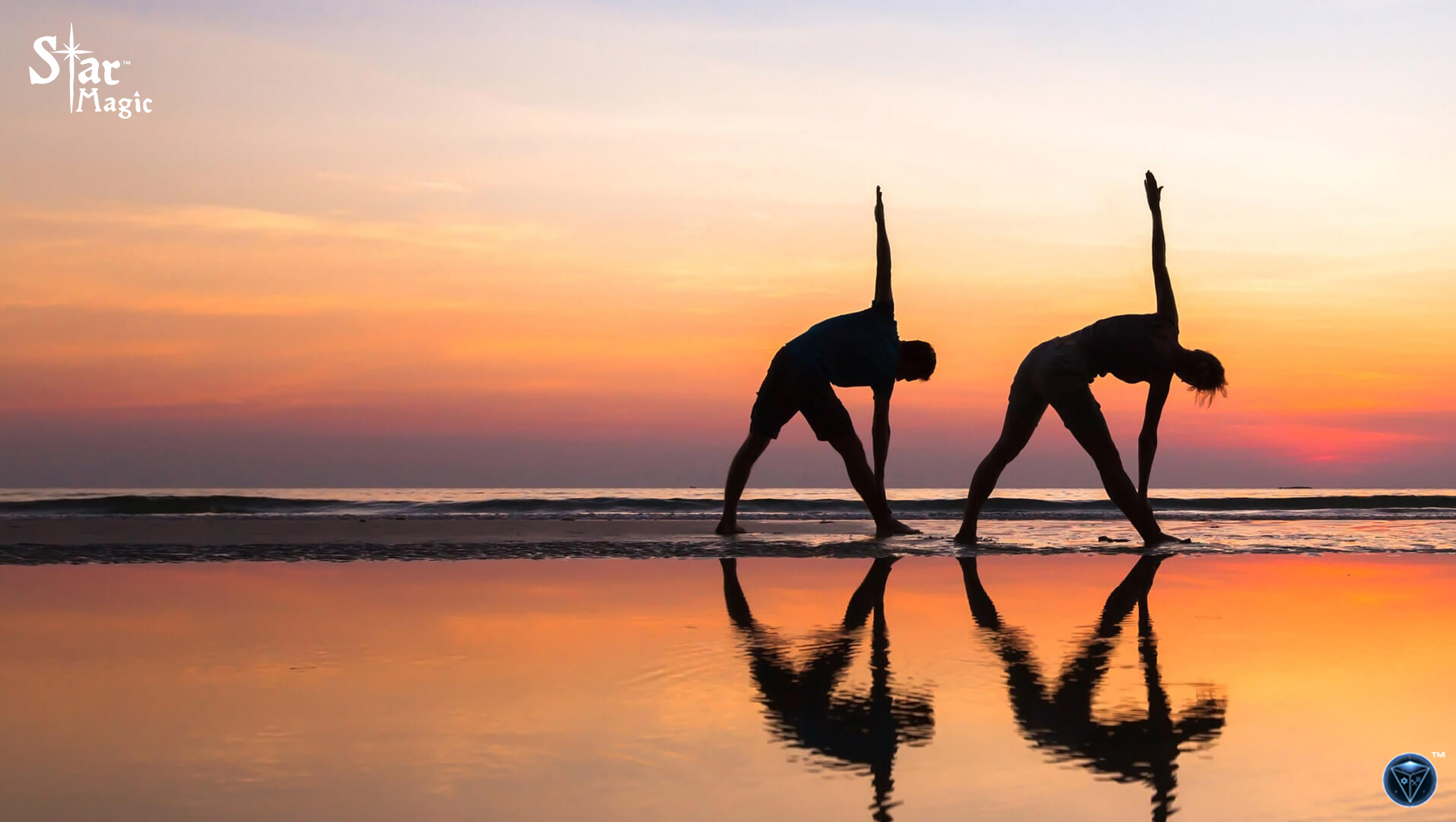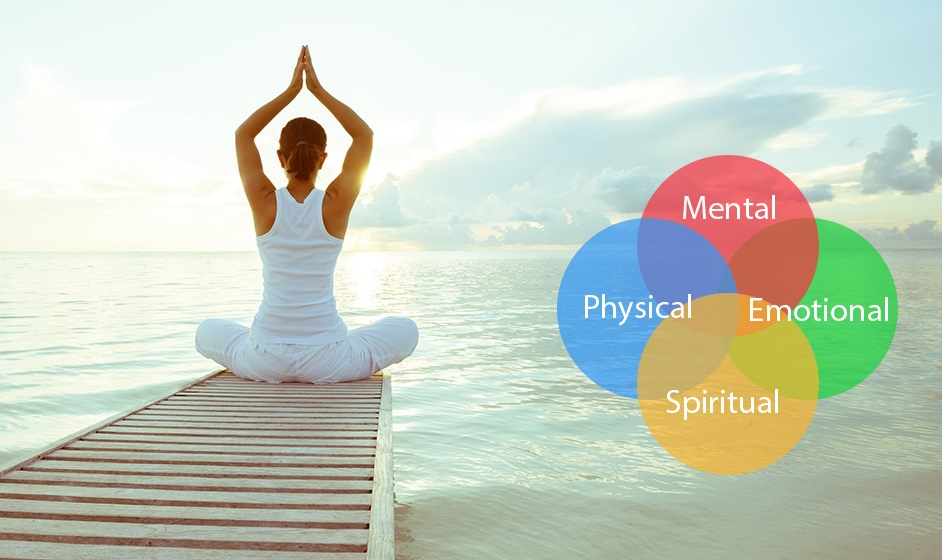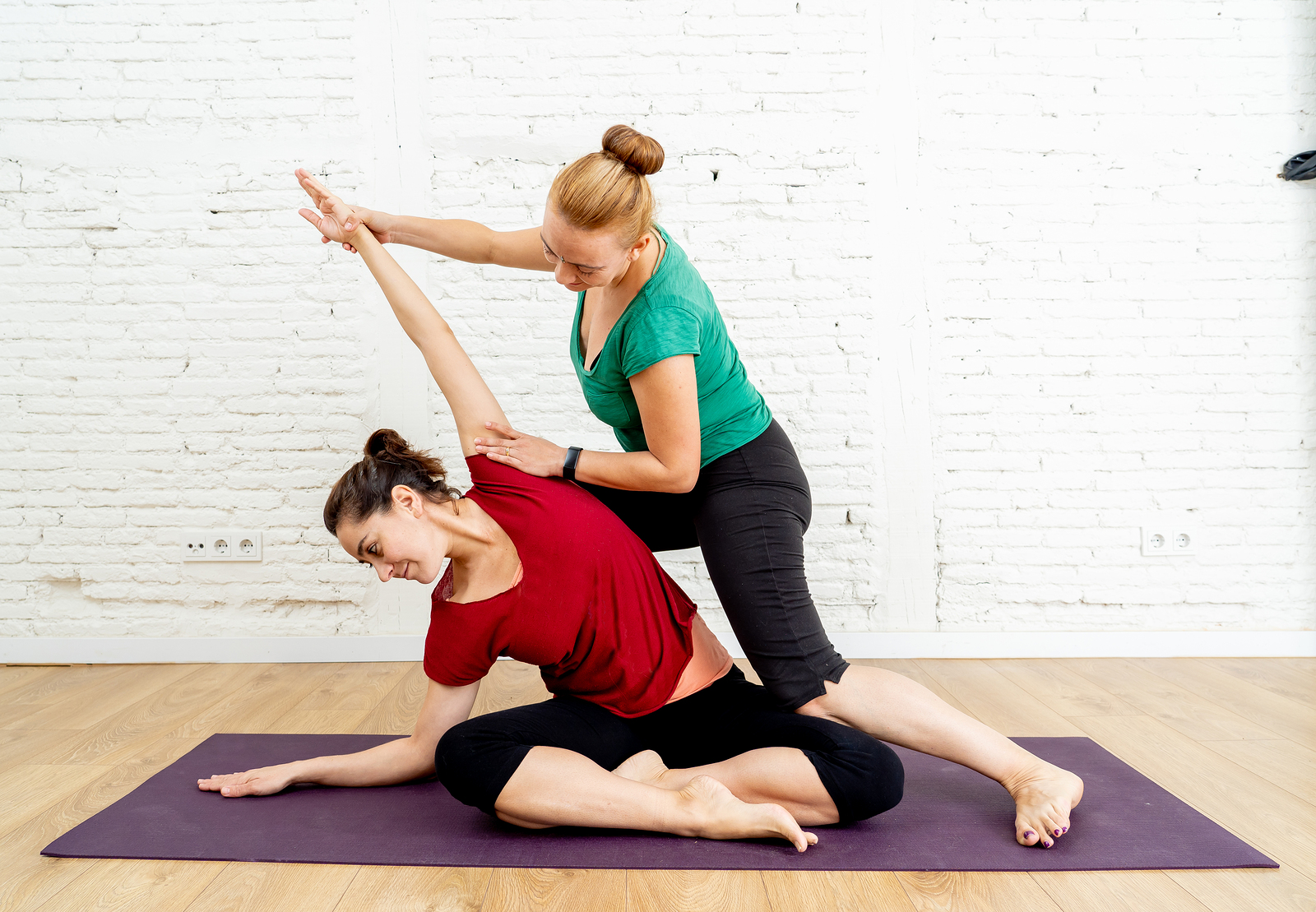The Amazing Health Benefits of Yoga

Yoga is a unique form of exercise and meditation that benefits the body, mind and spirit. It is an exciting, challenging, and beautiful way to exercise and also meet like-minded people.
The beauty of yoga is that it can be practiced nearly anywhere. You can practise yoga at home, in the park, or by doing a course at the gym or spiritual centre with other yoga enthusiasts. People of all ages and fitness levels can do the most basic yoga poses and stretches.
Historically yoga was a way of life. You dedicated yourself to a healthy lifestyle and community. Yoga includes healthy eating habits, bathing habits, meditation, breathing, social interaction and holistic physical exercise.
What is Yoga?
The word yoga means to yoke or bind. Yoga is a method of discipline that you embody in your daily life. Male yoga practitioners are known as yogis, and female practitioners are yoginis.
The yoga Sutra was compiled by the Indian sage Patanjali around 2,000 years ago. This sutra is a philosophical guidebook of 195 statements. These serve most of the yoga that is practiced today.

There are eight limbs of yoga. You refine your behaviour in the outer world when practising the eight limbs. Then you focus inwards until you reach Samadhi. The eight limbs are the yamas (restraints), niyamas (observances), asana (postures), pranayama (breathing), pratyahara (withdrawing senses), dharana (concentration), dhyani (meditation), and Samadhi (absorption, enlightenment).
Every yoga pose is known as an asana and each has a different name. Asana is a program of physical postures designed to purify your body and provides the physical strength and stamina required for long periods of meditation.
Yoga includes standing postures, seated twists, backbends, arm balances, inversions, and core holds. For example, the downward facing dog calms your brain, energises your body, improves digestion, strengthens arms and legs and is good for lowering high blood pressure.
What Does Yoga Do For You?
Yoga has many amazing benefits for your body, mind and spirit. It helps you to stretch your body and helps with the lower back pains from spending long hour at a computer. Yoga also helps you reconnect with invisible forces and energies, and it balances your body and mind.
Breathing is very important in yoga practise. All eastern cultures recognised the presence of the life force in our bodies and also in the universe. This life force energy is known by many names including prana, chi, and ki. Your body is a battery and you can charge it up with pure prana. Each time you breathe you absorb this energy. Yoga teaches you how to charge up your body properly.
Yoga poses with deep breathing send prana to all of the cells in your body. This flow of prana is naturally enhanced. Illness starts on the energetic level first where energy blockages are present. Yoga helps to stimulate the flow of this energy. This is why yoga is so powerful.

Forms of Yoga
There are over 100 different forms of yoga. Some are gentle and relaxing and others fast-paced and intense. Some of the main forms of yoga are given below.
Hatha Yoga combines a series of basic movements with breathing.
Ashtanga Yoga uses a series of poses which are combined with a special breathing technique.
Bikram Yoga is also known as ‘hot yoga’. It is a series of 26 challenging poses that are performed in a room heated to a high temperature.
Iyengar Yoga uses props like blocks, straps and chairs to help you move your body into proper alignment.
Kundalini Yoga is focussed on activating your chakras and opening up your energy channels. For spiritual awakening and activation, focus is given to your central channel from root to crown.

Other Amazing Health Benefits of Yoga
Yoga Improves your Posture. You maintain a healthier weight, become more flexible and improve your muscle tone and strength. Your posture will greatly improve because of this as your abdominals and back muscles can now fully support your weight.
You lose weight more easily. The excess stress of daily life can increase you weight. Practising yoga enables you to bring a deep sense of relaxation to your body and your mind. This helps you to de-stress and allows you to lose weight naturally.
Yoga Increases your flexibility. Improved flexibility is one of the first and most obvious benefits of yoga. Yoga postures work by safely stretching your muscles further. Yoga also stretches other soft tissue in the body such as ligaments and tendons. This increases the range of motion in your joints and allows you to move around more freely.

Yoga improves your mood and reduces stress. Yoga uses specific meditation techniques that focus your mind on your breathing to quieten your constant mind-chatter. This relieves stress and allows you to feel relaxed. Practising these breathing techniques can also boost oxygen levels to your brain leaving you more content with everyday life.
Yoga Increases your Self Confidence. Yoga and meditation boost your confidence by releasing anxiety and tension from your mind. Without anxiety you can establish an internal connection with yourself and you also feel confident about your physical body. This also increases your compassion for others and awareness of the moment.
Yoga lowers your blood pressure. Regular yoga practise increases your lung capacity as a result of the deep breathing process. This also increases your stamina and endurance. Also meditation and calming yoga asanas slow down your heart rate. This lowers blood pressure and may improve your immune system and lower cholesterol.
Yoga improves your muscle tone and strength. Yoga postures including downward and upward dog greatly increase your upper body strength. The plank focuses on your core and standing poses strengthen your upper leg muscles and lower back. Any pose will strengthen an area of your body without putting too much stress on specific muscle groups.
You risk of injury is reduced. Strenuous exercise can cause an imbalance of opposing muscle groups. Yoga concentrates on balancing all your muscles and it is of great benefit to mix up your exercise routine with regular yoga practice.

Choosing a Yoga Class
It is important to find a yoga class that fits your experience level and helps you achieve your physical or spiritual goals. When choosing a class make a list of convenient venues that are close enough and cheap enough you’re likely to actually go. Go to a few of them, pick up a schedule, and soak in the vibe.
When you select a teacher and class it is important that you feel comfortable there. A good yoga class is a supportive and has an inclusive community that gives you space to explore your practice. If you feel uncomfortable for any reason, try a different teacher, class, or studio.
Try beginner’s classes with a few different teachers. There is no hurry to commit to one teacher or style. You’ll try new classes throughout your practice.
Inform your yoga teacher about any injuries or physical problems you have. An experienced teacher will be able to modify the poses so that they are safe and appropriate for your body.
Healing For Horses Enquiry Form
"*" indicates required fields
Sign up for our weekly newsletter, for inspiration and fresh content from Jerry Sargeant.
Event Enquiry Form
"*" indicates required fields
Sign up for our weekly newsletter, for inspiration and fresh content from Jerry Sargeant.
[mc4wp_form id=”168″]
Download Prospectus Form
[contact-form-7 id=”50219″ title=”Download Propesctus Form”]
Download Prospectus Form
[contact-form-7 id=”50219″ title=”Download Propesctus Form”]
Star Magic
Accessibility Statement
- sminfozzle.testingweblink.com
- December 15, 2025
Compliance status
We firmly believe that the internet should be available and accessible to anyone, and are committed to providing a website that is accessible to the widest possible audience, regardless of circumstance and ability.
To fulfill this, we aim to adhere as strictly as possible to the World Wide Web Consortium’s (W3C) Web Content Accessibility Guidelines 2.1 (WCAG 2.1) at the AA level. These guidelines explain how to make web content accessible to people with a wide array of disabilities. Complying with those guidelines helps us ensure that the website is accessible to all people: blind people, people with motor impairments, visual impairment, cognitive disabilities, and more.
This website utilizes various technologies that are meant to make it as accessible as possible at all times. We utilize an accessibility interface that allows persons with specific disabilities to adjust the website’s UI (user interface) and design it to their personal needs.
Additionally, the website utilizes an AI-based application that runs in the background and optimizes its accessibility level constantly. This application remediates the website’s HTML, adapts Its functionality and behavior for screen-readers used by the blind users, and for keyboard functions used by individuals with motor impairments.
If you’ve found a malfunction or have ideas for improvement, we’ll be happy to hear from you. You can reach out to the website’s operators by using the following email
Screen-reader and keyboard navigation
Our website implements the ARIA attributes (Accessible Rich Internet Applications) technique, alongside various different behavioral changes, to ensure blind users visiting with screen-readers are able to read, comprehend, and enjoy the website’s functions. As soon as a user with a screen-reader enters your site, they immediately receive a prompt to enter the Screen-Reader Profile so they can browse and operate your site effectively. Here’s how our website covers some of the most important screen-reader requirements, alongside console screenshots of code examples:
-
Screen-reader optimization: we run a background process that learns the website’s components from top to bottom, to ensure ongoing compliance even when updating the website. In this process, we provide screen-readers with meaningful data using the ARIA set of attributes. For example, we provide accurate form labels; descriptions for actionable icons (social media icons, search icons, cart icons, etc.); validation guidance for form inputs; element roles such as buttons, menus, modal dialogues (popups), and others. Additionally, the background process scans all the website’s images and provides an accurate and meaningful image-object-recognition-based description as an ALT (alternate text) tag for images that are not described. It will also extract texts that are embedded within the image, using an OCR (optical character recognition) technology. To turn on screen-reader adjustments at any time, users need only to press the Alt+1 keyboard combination. Screen-reader users also get automatic announcements to turn the Screen-reader mode on as soon as they enter the website.
These adjustments are compatible with all popular screen readers, including JAWS and NVDA.
-
Keyboard navigation optimization: The background process also adjusts the website’s HTML, and adds various behaviors using JavaScript code to make the website operable by the keyboard. This includes the ability to navigate the website using the Tab and Shift+Tab keys, operate dropdowns with the arrow keys, close them with Esc, trigger buttons and links using the Enter key, navigate between radio and checkbox elements using the arrow keys, and fill them in with the Spacebar or Enter key.Additionally, keyboard users will find quick-navigation and content-skip menus, available at any time by clicking Alt+1, or as the first elements of the site while navigating with the keyboard. The background process also handles triggered popups by moving the keyboard focus towards them as soon as they appear, and not allow the focus drift outside it.
Users can also use shortcuts such as “M” (menus), “H” (headings), “F” (forms), “B” (buttons), and “G” (graphics) to jump to specific elements.
Disability profiles supported in our website
- Epilepsy Safe Mode: this profile enables people with epilepsy to use the website safely by eliminating the risk of seizures that result from flashing or blinking animations and risky color combinations.
- Visually Impaired Mode: this mode adjusts the website for the convenience of users with visual impairments such as Degrading Eyesight, Tunnel Vision, Cataract, Glaucoma, and others.
- Cognitive Disability Mode: this mode provides different assistive options to help users with cognitive impairments such as Dyslexia, Autism, CVA, and others, to focus on the essential elements of the website more easily.
- ADHD Friendly Mode: this mode helps users with ADHD and Neurodevelopmental disorders to read, browse, and focus on the main website elements more easily while significantly reducing distractions.
- Blindness Mode: this mode configures the website to be compatible with screen-readers such as JAWS, NVDA, VoiceOver, and TalkBack. A screen-reader is software for blind users that is installed on a computer and smartphone, and websites must be compatible with it.
- Keyboard Navigation Profile (Motor-Impaired): this profile enables motor-impaired persons to operate the website using the keyboard Tab, Shift+Tab, and the Enter keys. Users can also use shortcuts such as “M” (menus), “H” (headings), “F” (forms), “B” (buttons), and “G” (graphics) to jump to specific elements.
Additional UI, design, and readability adjustments
- Font adjustments – users, can increase and decrease its size, change its family (type), adjust the spacing, alignment, line height, and more.
- Color adjustments – users can select various color contrast profiles such as light, dark, inverted, and monochrome. Additionally, users can swap color schemes of titles, texts, and backgrounds, with over seven different coloring options.
- Animations – person with epilepsy can stop all running animations with the click of a button. Animations controlled by the interface include videos, GIFs, and CSS flashing transitions.
- Content highlighting – users can choose to emphasize important elements such as links and titles. They can also choose to highlight focused or hovered elements only.
- Audio muting – users with hearing devices may experience headaches or other issues due to automatic audio playing. This option lets users mute the entire website instantly.
- Cognitive disorders – we utilize a search engine that is linked to Wikipedia and Wiktionary, allowing people with cognitive disorders to decipher meanings of phrases, initials, slang, and others.
- Additional functions – we provide users the option to change cursor color and size, use a printing mode, enable a virtual keyboard, and many other functions.
Browser and assistive technology compatibility
We aim to support the widest array of browsers and assistive technologies as possible, so our users can choose the best fitting tools for them, with as few limitations as possible. Therefore, we have worked very hard to be able to support all major systems that comprise over 95% of the user market share including Google Chrome, Mozilla Firefox, Apple Safari, Opera and Microsoft Edge, JAWS and NVDA (screen readers).
Notes, comments, and feedback
Despite our very best efforts to allow anybody to adjust the website to their needs. There may still be pages or sections that are not fully accessible, are in the process of becoming accessible, or are lacking an adequate technological solution to make them accessible. Still, we are continually improving our accessibility, adding, updating and improving its options and features, and developing and adopting new technologies. All this is meant to reach the optimal level of accessibility, following technological advancements. For any assistance, please reach out to


